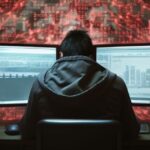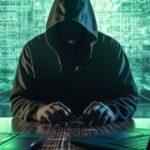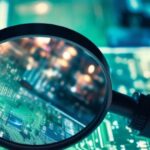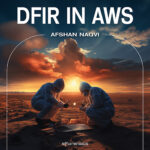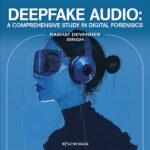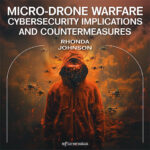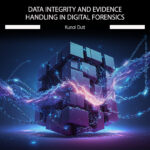No products in the cart.
Using Two Tools for Smartphone Forensics Acquisitions
No greater area in digital forensics changes more frequently than smartphones. The many differences between manufacturers, regions, and devices can cause a wide range of problems when looking at the smartphone from an acquisition perspective. Keeping this in mind, the landscape of available tools has also changed dramatically over the past few years. With the development of more and more private tools vs open-source tools, there are a variety of options to select from. The following will review the different acquisition options between an open-source solution vs a private solution, and how the use of both tools can benefit an organization.
Best Digital Forensic Tools
Digital forensic investigators use a variety of tools for various aspects of digital forensics, including data recovery, analysis, and reporting. Here is an overview of some of the most useful tools in the field, with links to more information about the tools or to the project pages.
Advanced Digital Forensics with FTK Imager
FTK Imager is often used in conjunction with other forensic tools and is known for its reliability and effectiveness in digital investigations, such as in cases of data breaches, cybercrimes, and for corporate compliance.
Artificial Intelligence and Image Manipulation
Both AI technology development and its mainstream use have seen explosive growth in the last couple of years, both for good and for bad. The rise of AI-generated fake images to influence people's perceptions has led us to investigate one tool ( Hive AI Detector ) that may help combat this growing problem and make it easier to identify AI-generated images.

Digital Forensic Analysis Using Autopsy 4.21.0
This article shows a forensic analysis using Autopsy 4.21.0. The SUSPECT.EO1 file is a disk image case study and is evidence used in Belkasoft's X training and CTF challenge. The article is not intended to be a complete analysis of this image because this image has a lot of detail and has an investigative complexity that would require more than one article. In this way, some parts will be analyzed with the intention of showing the use of Autopsy.
Forensicating Threats in the Cloud
As organizations have shifted to the cloud, it's not surprising that threat actors have followed. Below, we run through some of the most prominent attacks in the cloud today and how to perform cloud forensics and incident response to resolve them.
Autopsy: The Digital Forensics Toolkit
Autopsy is an open-source, cross-platform digital forensics toolkit that offers a wide range of features and capabilities to aid investigators in the retrieval and analysis of digital evidence according to the project page (Autopsy, n.d.). This essay explores Autopsy, its significance in digital forensics, and its key features, from starting a case to managing the contents of artifacts and everything in between.
Autopsy 4.21 Version
This article shows you how to start a case with the new version 4.21.0 of Autopsy, one of the pioneering tools responsible for the digital change in forensic investigation in recent years. The article itself does not claim to be a complete guide for a person to use Autopsy. For this, there are several sources on the web. However, an introduction is made on how to start a case in Autopsy, using an image called SUSPECT_LAPTOP, which was used in Belkasoft training and for which I received permission to use.
Best Digital Forensic Tools
Digital forensic investigators use a variety of tools for various aspects of digital forensics, including data recovery, analysis, and reporting. Here is an overview of some of the most useful tools in the field, with links to more information about the tools or to the project pages.
Hunting Hackers Using Autopsy on a macOS Image
In this scenario, we've received an image of a USB thumb drive (orig_128mb_image.dd) confiscated from the hacker's backpack. It was literally sewn in the lining of the backpack, which makes it even more interesting. The primary investigators did not want to plug it into any of their field laptops (they learned from the last time – another story, another time), and kicked it back here to our basement team for further analysis. You will learn clever forensic concepts to use in the field and investigations.
Advanced Digital Forensics with FTK Imager
FTK Imager is often used in conjunction with other forensic tools and is known for its reliability and effectiveness in digital investigations, such as in cases of data breaches, cybercrimes, and for corporate compliance.
Digital Forensic Lab Management Made Easy with Monolith
There are multiple areas to focus on when managing a digital forensic laboratory. Some of the important items to track are physical evidence like mobile devices or hard drives. However, how do we keep on track with other devices or evidence? In a forensics laboratory, for instance, there is hardware, software and other equipment that needs to be tracked. Some laboratories use spreadsheets, or inventory management systems, but these methods are seldom cohesive in relation to documenting evidence and building reports. A company called Monolith Forensics created a solution for this called Monolith.
The Two-Tool Process in Digital Forensics. Step 1 Selection
With such a large variety of digital data available, the tool selection process will depend greatly on what type of data you seek and how much of a budget you must spend. Many organizations opt to minimize costs by relying on open-source technology for their investigative needs. However, choosing this method can result in a shortfall when it comes to finding all the critical data. To prevent missing critical data, every investigator should have a secondary tool to use to cross-validate their findings. No single tool can process and capture all the available data, nor does every tool parse the data the same way. That's why employing a two-tool process is a fundamental cornerstone in the field of digital forensics. The selection process outlined below lists steps to follow to maximize your tool selection.
Using Two Tools for Smartphone Forensics Acquisitions
No greater area in digital forensics changes more frequently than smartphones. The many differences between manufacturers, regions, and devices can cause a wide range of problems when looking at the smartphone from an acquisition perspective. Keeping this in mind, the landscape of available tools has also changed dramatically over the past few years. With the development of more and more private tools vs open-source tools, there are a variety of options to select from. The following will review the different acquisition options between an open-source solution vs a private solution, and how the use of both tools can benefit an organization.
Navigating the Skies of Justice: Digital Forensic Tools for Weaponized Drone Incidents
This article delves into the significance of digital forensic tools tailored for such incidents, providing detailed insights and a comprehensive summary in the form of a table.
Interview with Kunal Dutt
In myriad cases, digital forensics comes into the picture, but the most generic answer would be “when the cyber security infrastructure fails somewhere around the cause of vulnerabilities, to identify and trace down the entire incident of this failure would be a process done by this glorious department known as digital forensics“
Incident Response and Forensics Foundamentals in AWS - LIVE WEBINAR with Afshan Naqvi
Welcome to the first live webinar by eForensics Magazine. My name is Bartek and I'm responsible for organizing online courses, mostly for PenTest Magazine and for Hackin9 Magazine, but also the most recent course of eForensics, which is instructed by Ms. Afshan Naqvi, who is present with us today.
Interview with Dauda Sule
You must be able to conduct lab exercises for students, particularly in digital forensics, and hold a minimum of a bachelor's degree in cyber security or a related discipline. You would definitely need to be able to demonstrate digital forensics skills with tools such as FTK Imager, Autopsy, and Wireshark, to name a few.
DFIR Labs in the Cloud: The Future of Digital Forensics
In this article, we will cover the ins and outs of adopting cloud solutions in digital forensics and explore how DFIR tools can accommodate this change. As an example, we will look into Belkasoft digital forensics software, known for its innovative solutions, and explore the features that enable it to embrace the cloud approach.

DFIR in AWS (W63)
This course provides a crucial skill set in securing AWS environments. In today's digital landscape, understanding digital forensics, incident response, and automation in AWS is essential for safeguarding data and infrastructure. This course offers hands-on experience, making it an invaluable asset for those eager to enhance their cybersecurity expertise and stay ahead in the dynamic field of cloud security.
Deepfake Audio: A Comprehensive Study in Digital Forensics Course Online (W62)
This course is aimed at presenting an elementary yet comprehensive picture of the field of digital audio forensics, with the implied hope that it will afford the participant useful theoretical and practical knowledge of the field and its various aspects.
Micro-drone Warfare: Cybersecurity Implications and Countermeasures (W61)
"Micro-drone Warfare: Cybersecurity Implications and Countermeasures" is an advanced course designed for digital forensics professionals seeking to understand the cybersecurity challenges posed by the increasing use of micro-drones in modern warfare. The course provides an in-depth exploration of micro-drone technologies, their role in cyber threats, and the countermeasures necessary to mitigate these threats. Learners will delve into the various types and capabilities of micro-drones, their communication and networking technologies, and the associated cybersecurity vulnerabilities. The course covers risk assessment and threat modeling for micro-drone systems, analysis of real-world micro-drone warfare scenarios, and the development of defense strategies against potential cyber attacks. Additionally, the course addresses the legal and policy frameworks governing micro-drone warfare cybersecurity, including ethical considerations, privacy implications, and international regulations. The course is led by Rhonda Johnson, a seasoned educator and Ph.D. student specializing in Cybersecurity. Prior knowledge of computer networks, cybersecurity principles, operating systems, basic electronics, and wireless communication is recommended. The course employs tools such as Drone Simulators and Drone Performance Evaluation Tools for practical learning.
Data Integrity And Evidence Handling in Digital Forensics - Course Online (W60)
The course is intended for individuals from the IT industry as well as those outside of it who have some knowledge of cybersecurity. Basic concepts of cybersecurity are required. During the course, participants will acquire skills related to: Understanding digital forensics, including its scope, relevance in investigations, and legal and ethical considerations. Concepts of data integrity and its significance in digital forensics. They will learn about various threats to data integrity and techniques for ensuring its preservation throughout the forensic process. Principles of evidence handling, including chain of custody, documentation, and the importance of maintaining the integrity of evidence. Legal and ethical considerations related to digital evidence handling. This includes understanding privacy and confidentiality considerations and the role of expert witness testimony in courtroom presentations. Data acquisition techniques for different types of digital devices. They will learn about disk imaging, integrity verification, and the use of hash functions in maintaining data integrity. Techniques for analyzing and examining digital evidence, including file system analysis, data recovery, reconstruction techniques, and metadata analysis. The course also includes practical application of various tools and technologies used in digital forensics, such as Autopsy, The Sleuth Kit (TSK), Volatility, Plaso, Wireshark, Bulk Extractor, OSForensics, and Autopsy Browser. At the end of the course, a final exam is planned consisting of multiple-choice questions on the concepts and fundamentals arising from the course outcomes, along with practical tasks.


